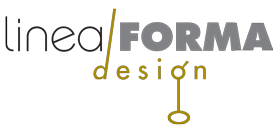Back in the late 1970’s, when I was designing office furniture for MMI in California, I had the privilege of working with Stone & Steccati, one of the most respected photo studios around for shooting furniture. The two partners were Zen masters for finding the most perfect ways to accent the best qualities of furniture details using lights. Many, many lights. One of my favorite experiences was watching them shoot a 16’ long conference table that sat on three highly reflective huge chrome cylinder bases in such a way that the photographers, me, and everything else in the studio were not reflected in the final picture. Not an easy task at all. Through many visits to their studio over the years, they taught me lots of magic tricks and tips on “seeing” that I still use today.
I’ve been using Autodesk Maya for my 3D modeling for over 15 years, but in the last three years Maya switched from the original rendering engine, Mental Ray, to a completely new third-party render engine named Arnold. Everything about Arnold is different, and in fact, it doesn’t even like models made using the old renderer at all. I’ve spent lots of time just converting old scenes. But I have spent even more time learning how to use the new renderer, one aspect at a time over several years. The renderer is the process in Maya in which one makes all the decisions that impact the visual look of the final image–the same decisions a photographer makes, and then some.
This month I concentrated on the photo studio itself, the little digital world where I actually render my models. And lighting the studio is where, if I may repeat myself, the magic really happens. In the past, the simplest studio setup meant creating a floor and back wall plus usually three lights; the hero/key light, the fill light to soften shadows, and the backlight to pull the back edges of the object away from the background. By adjusting the position and intensity of each one, the best details of the subject can be displayed and accented in ways that tell the story best. Using softboxes and barndoors on lights, traditional photographer’s tools, can soften or harden the edges of the light, to add more range to the effects.
Using the new Arnold Render plug-in, I’ve found even better ways to light my scenes. In particular, the Sky Dome Light. This adds a huge sphere around the whole scene, creating an enclosed environment, or “world” to work in, and be reflected back. In its default form, it acts like a white light coming from all directions, and one or more Area Lights can be added to the scene to function as traditional softboxes to build up light as needed.
A great feature of the Sky Dome is its ability to attach an HDRI (high-dynamic-range imaging) photo to the dome surface. The most common images are panoramas with sky, clouds, and ground elements that wrap around the inner sphere to create a realistic background, and even some middle ground. If the image has the sun shining in it, the dome can be rotated to change the direction of shadows on the 3D model based on where the sun is. Both of the Honda models from my last two posts used several outdoor HDRI photos for their rendering backgrounds. The dome itself was the only light in the scene and cast all its shadows and reflections through my manipulation of its position and angle.

Since most of the models I make are small products for my clients, I really wanted to build a couple new environments that more closely resembled a “table top studio” used by consumer product photographers. In the studio shoot sky, clouds and buildings are not always the desired reflections you want in the glass and shiny surfaces of your product model. Studios default to a neutral setting with additional lights and images used very judiciously and sparingly, aspects that generally cannot be controlled much outdoors. And HDRI images do exist of real photographer studios that can be wrapped around the Sky Dome in my 3D model studio. So the past month has been devoted to creating the light studios for my table top shooting. And the first client shots are showing significant improvements over the same shots I took earlier. Nothing is more satisfying and rewarding than finding new ways to improve my art, and seeing the results firsthand!
Share this:


12 Responses
mark johnson
Very cool. I of course , have no idea how you do this, glad to hear you’re so energized with the project and producing great results
bgob1
Thanks, Mark. I do really love it. Still feels like magic to me.
Jeffrey Hall
Thanks for the update and the inside scoop into your research on lighting objects (sculpture). Your sage input is always appreciated.
bgob1
Thanks for reading, Jeff.
Gayle
Nice. Very cool.
bgob1
thanks, G.
Terri Amacher
Always learning, always improving! You have an amazing repertoire of skills along with being a great guy!!!
bgob1
thanks, Terri. still having fun learning things.
Elisa
Don’t stop bringing on the light, Bill! Love hearing about your ever-evolving artistic skills and developments. Pretty, pretty, pretty cool!!
bgob1
oh, I’m bringing it, sister. thanks.
Seana
Very cool to learn about your work!
bgob1
we’re learning together, Seana!